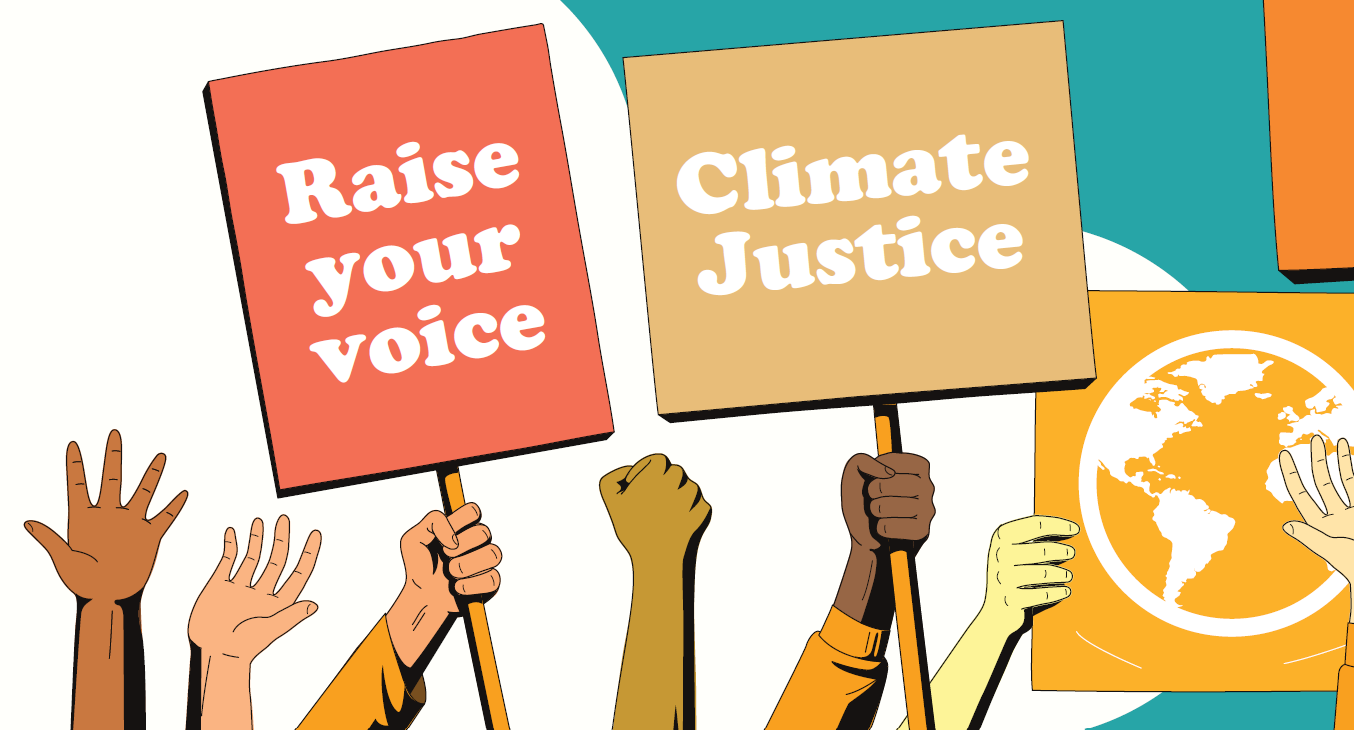
CHEAT SHEET
Climate risks. Climate risk impacts companies in different ways, but it can be divided into six categories: physical risks, value-chain risks, litigation risks, reputational risks, technology risks, and regulatory risks.
Shareholder activism. The fastest growing shareholder resolutions are related to environmental, social, and governance (ESG) topics, and the majority of those are climate focused.
Board oversight. Appointing climate experts, educating existing board members on climate risks, and having climate issues under a purview of a board committee can be effective ways to ensure risks and issues are being addressed at the top level.
Analysis and transparency. Incorporate climate risks as part of larger enterprise risk assessments, instead of as a separate study or report, and consider disclosing climate-related risks to the public.
The climate is changing — more precipitously and with more severe consequences than many anticipated. A decade or more ago, we were often asked whether a board member could be in breach of his or her fiduciary duties by focusing on issues related to climate change. In the current environment, we are often asked if board members could be in breach of their duties if they do not consider the impact of climate change. The answer is that it depends, as climate change impacts companies across different industries very differently. The duties of a board member run first and foremost to his or her company’s shareholders, although increasingly, companies acknowledge that they must focus on investing in employees, providing value to customers, and supporting communities, as recently confirmed by the Business Roundtable. In fact, like cybersecurity and data privacy, all but ignored in boardrooms until a scant few years ago, the potential for shareholder value to be negatively impacted by changes in climate is now painfully clear.
The vast majority of board members of private and public companies — regardless of gender, race, geography, or political persuasion — recognize the devastation that has been wrought on communities and the world’s economies by the increasing incidence of severe weather. These changes have been amplified in recent years and have manifested in destructive floods and wildfires. Flood and fire losses in the United States alone were greater than US$9 billion in 2017 and US$19.2 billion in 2018. Pacific Gas and Electric (PG&E) Corporation’s board of directors has been confronting the challenge of climate change for many years — from reducing the carbon intensity of the company’s operations, consistent with California’s clean energy goals, to building climate resilience into the company’s infrastructure investment practices, to the more recent devastating impact that climate change has had on the company’s operations and the communities it serves.
When it comes to climate change, the assumptions underlying all of our economic models have materially changed. The “new normal” is volatility and unpredictability. That once-in-a-century flood is now happening every other year. There is expected to be a 45 percent to 87 percent increase in category four and five hurricanes over the next few years. Reporting on continuing heat waves in Europe in 2019, The New York Times stated that “[t]he hottest summers in Europe in the last 500 years have all come in the last 17 years.” And in California, many families (ours included) have N95 (or stronger) masks hanging in their kitchens because the question is not whether there will be another wildfire, but when.
So, how should a board respond to climate change — arguably the greatest and most immediate threat to the world and human existence? How can boards gain an understanding of how risks occasioned by changes in the climate and natural environment will impact operations and provide the appropriate level of support and guidance to management? To date, the primary impediment for boards is that most companies believe that they have insufficient data or information to determine when and how climate change will have a material impact on their business. To borrow from Bob Litterman, the chairman of the Risk Committee at Kepos Capital, we are all in a car headed toward a cliff, but we don’t know exactly when we will topple over or how far down we will fall. Such uncertainty makes it difficult for companies to know when and how to act. However, given what we know now, ignoring the impact of climate change on business in the long term and the short term is at best irresponsible, and at worst could deal a significant blow to the company and its shareholders. We offer advice on how board members — and the inhouse counsel advising them — can consider changes in climate as they provide guidance and exercise their oversight function over management.
Scoping the issue
Companies should examine their carbon emissions or otherwise scope how they are potentially contributing to the problem through emissions of greenhouse gases (GHGs) and evaluate climate risk or how changes in climate that are already in motion will directly and indirectly impact them.
Ensuring that a company is tracking its carbon emissions, directly and through its supply chain, is certainly important. But given that more than 94 percent of the world’s GHG emissions come from the energy, transportation, and agriculture sectors, tracking carbon emissions is much more critical to some companies and more of a “nice to have” for others.
On the other hand, risks associated with changes in climate impact all companies. Climate risk can be broadly divided into six categories:
- Physical risks. Acute risks such as flooding, hurricanes, fires, and landslides, as well as chronic risks such as sea level rise, heat waves, drought, and food security on company operations are some of the most obvious risks.
- Value-chain risks. Acute weather events and chronic climate patterns disrupting the availability of raw materials and energy supply, supplier operations, and local communities all affect a company’s supply chain.
- Litigation risks. To date, more than 800 cases have been filed related to climate change impacts in the United States, ranging from constitutional challenges, to federal statutory claims, to securities disclosure claims.
- Reputational risks. Customers make buying decisions based on the perception that a company is either improving or harming the environment and contributing to climate change.
- Technology risks. Company operations can be impacted by significant technology changes (e.g., artificial intelligence, blockchain, electric vehicles) that are focused on reducing emissions.
- Regulatory risks. Boards should be aware of evolving climate change-related regulation, particularly outside of the United States, as another risk. For example, EU countries are required to promulgate regulation to support renewable energy sources, reduce energy use in buildings, and reduce carbon emissions from new vehicles.
Further, for all of these risks — but particularly the physical and supply-chain risks — boards increasingly need to be able to “see around the corner.” To do so effectively, they may need to rely on experts to make informed predictions about what may be coming next.
How does climate change affect your company?
Climate change does not impact all companies in the same way. How a company assesses risk associated with climate change depends in large part on its industry and the scale of its operations. For example, companies in the transportation sector have identified the physical risks of climate change, specifically GHG emissions, and critical-incident risk management as material to operations and have so identified these risks in their public filings with the Securities and Exchange Commission (SEC). On the other hand, companies in the consumer products sector focus on physical and value-chain risks, including water and wastewater management, material sourcing, and efficiency and supply-chain management. Technology companies, particularly those involved in hardware manufacturing, measure value-chain risks as well, especially when they involve material sourcing and efficiency and supply-chain management. And all companies are increasingly considering reputational risks given increasing activism from employees and consumers.
How climate change affects consumers’ and employees’ views of a company
Climate change is impacting how employees view a company as a place that they want to work and how consumers evaluate a company from which they are willing to buy products and services. Increasingly, there is no “top-down” dissemination of information. Employees and consumers rely on the data and opinions proffered by their peers and on social media. For Google, employee activism has reached new levels, with 20,000 workers walking out to protest sexual harassment policies and, in an unprecedented move, joining with activist shareholders at a shareholder meeting to protest both employment policies and plans to build a censored search engine for China. Further, companies such as Microsoft responded to customer pressure this spring and agreed to double its internal fee on carbon emissions to US$15 per ton.
For Google, employee activism has reached new levels, with 20,000 workers walking out to protest sexual harassment policies and, in an unprecedented move, joining with activist shareholders at a shareholder meeting to protest both employment policies and plans to build a censored search engine for China.
How climate change affects shareholder demands
Boards must also be aware of their companies’ shareholder base and the likelihood of climate-related shareholder activism. Of late, the fastest-growing category of shareholder resolutions are related to environmental, social, and governance (ESG) topics, with the majority of those being climate focused. Shareholders have shifted from requesting that companies provide data on greenhouse gas emissions, or have a committee focused on ESG more generally, to requesting reports on climate-related risks, measurable goals for renewable energy sourcing and reduction of greenhouse gas emissions, and information on the impact of supply chains on deforestation. Increasingly, those shareholder resolutions are securing the votes needed for adoption. The Edelman Trust Barometer Special Report on Institutional Investors, which surveyed 500 institutional investors globally, found that 90 percent of respondents said their firm had changed its voting or engagement policy to be more attentive to ESG risks, and two-thirds said this change had taken place in the past year. Some institutional investors have published frameworks for boards to assess climate risks.
Assessment tools — help or hype?
A variety of tools, at various levels of maturity, exist to help companies assess climate risk. Many of these are tied to public reporting, and we find it has become increasingly difficult to separate the wheat from the chaff, given the sheer volume of information requested by well-meaning nongovernmental organizations (NGOs) and fielded by public company in-house counsel. The nonprofit Carbon Tracker is well respected for its effective efforts to gather data on emissions, focused on the fossil fuel industry, and to assess the costs of the “carbon bubble” and impact on the capital markets. In addition, the Carbon Disclosure Project is devoted to encouraging companies, investors, and governmental entities to measure, manage, disclose — and ultimately reduce — carbon emissions. Further, there are others, like the Sustainable Accounting Standards Board, that do not request or assess data from companies but work with corporations, investors, and NGOs to develop a framework for assessing which of the broad array of ESG factors (including climate change) are material to operations by industry. That framework has been translated into recommended disclosures that companies can integrate into SEC filings or include in separate sustainability reports prepared for investors.
For risk assessment as an extension of enterprise risk management and financial reporting, companies are increasingly relying on guidelines like those published by the Bloomberg-Carney Task Force for Climate-Related Financial Disclosure (TCFD). This group has developed a framework for scenario analyses on companies’ operations to evaluate and report on the financial impact of climate risk. An increasing number of companies across industries — 104 in 2018 alone — are publishing the results of their evaluations.
No silver bullet — but leading best practices
Finally, there is no “best-in-class” solution for all boards to adopt in considering climate risk as part of their oversight function. NGOs such as Ceres have been working for a decade or more to develop practical recommendations to support boards in making informed decisions related to climate change, for example, training for board and management, expanding board expertise, establishing committees to focus on climate, structuring compensation to reward management action, and enhancing disclosure to investors. Specifically, some of the leading practices on climate governance include the following.
Driving the analysis of what climate change looks like for business
Most companies require management to prepare a report on how its business and operations will be impacted by changes in climate, focusing on the risks discussed earlier. This is usually most effective if incorporated as part of an enterprise risk assessment, as opposed to a separate study and report.
For example, in 2016, PG&E Corporation published a Climate Change Vulnerability Assessment that details the company’s exposure to, and strategies to address a range of climate risks. In 2017, the company established a Climate Resilience Officer Coordination Committee to manage its efforts to build climate resilience. It is now piloting a Climate Resilience Visualization Tool, which incorporates forward-looking climate data into the company’s mapping system to enable its workforce to visualize potential climate risks to its infrastructure.
In 2017, PG&E submitted its first Risk Assessment Mitigation Phase filing with its regulator, the California Public Utilities Commission, which included a detailed modeling exercise regarding climate impacts on company-wide risks. Building off of this work, the company is designing an enterprise-wide climate change risk integration strategy to inform resource planning, investment, and operational decisions.
Management may engage outside experts to leverage their knowledge of peer companies. As an example, UBS’ Board of Corporate Culture and Responsibility Committee requires and then regularly reviews the company’s materiality assessment as it relates to sustainability. PG&E Corporation completed a third-party-led materiality assessment, developed through a structured process that included interviews with internal and external stakeholders, which identified priorities for the long-term sustainability of its business and more than a dozen material issues — including GHG emissions, renewable energy, and climate change resilience — to inform the company’s business strategy.
Looking at board governance structure for climate change
The best board structure to address climate risk varies greatly and depends on the industry and board composition. For some companies, including climate change oversight under the purview of an existing committee, or a new committee, can be effective in ensuring that the risks and issues are being addressed at the board level. For example, Gap Inc. embeds ESG into the mandate of its Governance Committee, which includes the board chair and chairs of the Compensation, Audit, and Finance Committees. However, for others, particularly those in industries most impacted by climate change, climate risk should be considered in connection with all agenda items — and delegation of that risk to a committee can diminish the effectiveness of its consideration.
The best board structure to address climate risk varies greatly and depends on the industry and board composition.
Recruiting directors with climate change experience
Understanding the impacts associated with climate change can be difficult, and, again, the risks vary greatly by industry. Having a director with the requisite experience and expertise in this area (similar to having a director with financial expertise) may provide a board with valuable insight into how ESG factors may affect the business, particularly in industries (such as energy, transportation, and agriculture) that have more of an impact and will be more affected. In recognition of this, ExxonMobil appointed leading climate scientist Susan Avery to its board of directors.
Considering options to educate an entire board on climate change
As an alternative to adding a climate expert, an option for many boards may be to educate board members on sustainability issues to allow for thoughtful deliberation and strategic decision-making. Most training programs for directors (including Stanford’s Rock Center and the National Association of Corporate Directors) provide some content related to sustainability and climate at the board level. However, Berkeley Law School has been working with Ceres to develop a more robust curriculum to cover all climate and ESG issues that may impact operations. Further, companies such as Co-operators, the Canadian insurance co-operative, have identified ESG training topics and organized sessions for board members that include external expert speakers.
Considering how to hold management accountable for climate change
More controversially, given the importance of climate considerations, some companies have modified their compensation framework to provide incentives to employees who are effective at reducing carbon footprints and mitigating the impact that climate change has on business and operations. For example, Shell has committed to linking executive compensation to short-term carbon emission-reduction targets.
Encouraging greater transparency on climate change
The voices clamoring for greater disclosure regarding carbon emissions and climate risk have grown considerably in recent years. The trend has been to link climate-related disclosure to disclosure on financial risks and performance dedicated to investors as opposed to including these metrics in a separate corporate social responsibility report that may serve primarily for marketing purposes. Many companies, including JetBlue, Citi, Chevron, and AES have issued TCFD reports disclosing the short- and long-term risks associated with climate change.
Ten years ago, we would have been hard pressed to identify a board member who was up to speed on the risks associated with cyberattacks and data security. Today, every board member knows all too well both the risks and the impact on shareholder value of not ensuring that management has robust policies and protections in place. Similarly, boards of directors must work with management to address the threat to shareholder value posed by the looming risks associated with climate change. They can only address the risk by educating themselves on how climate change will impact companies in their specific industries and geographies and by taking the necessary steps to prepare their companies to address these risks.
Climate change is like aging and death: We understand that it is happening. We understand that it may result in permanent and irreversible change. But its impact on specific companies — and the timeline for anticipated changes — is both overwhelming and difficult to predict. There are more than a few partial solutions. Publicly mandated and privately innovated solutions tied to the transition from fossil fuels, technological advancement, progress in the agricultural and transportation sectors, and investment in infrastructure will all certainly help.
However, the Intergovernmental Panel on Climate Change painted a clear picture of an environment in which we are successful at limiting global warming to 1.5 degrees or two degrees — and it looks vastly different from our world today. Boards of directors will be well served to put the appropriate governance in place so that their companies can be prepared for change over the coming months and years.
Climate change is like aging and death: We understand that it is happening. We understand that it may result in permanent and irreversible change. But its impact on specific companies — and the timeline for anticipated changes — is both overwhelming and difficult to predict.
ACC EXTRAS ON… Board responsibilities
ACC Docket
It’s Coming from Inside: How to Educate Your Board of Directors on Insider Threats (Sept. 2018).
Getting the Board on Board: Fulfilling Cybersecurity Governance Duties. (Oct. 2016).
ACC HAS MORE MATERIAL ON THIS SUBJECT ON OUR WEBSITE. VISIT WWW.ACC.COM, WHERE YOU CAN BROWSE OUR RESOURCES BY PRACTICE AREA OR SEARCH BY KEYWORD.





